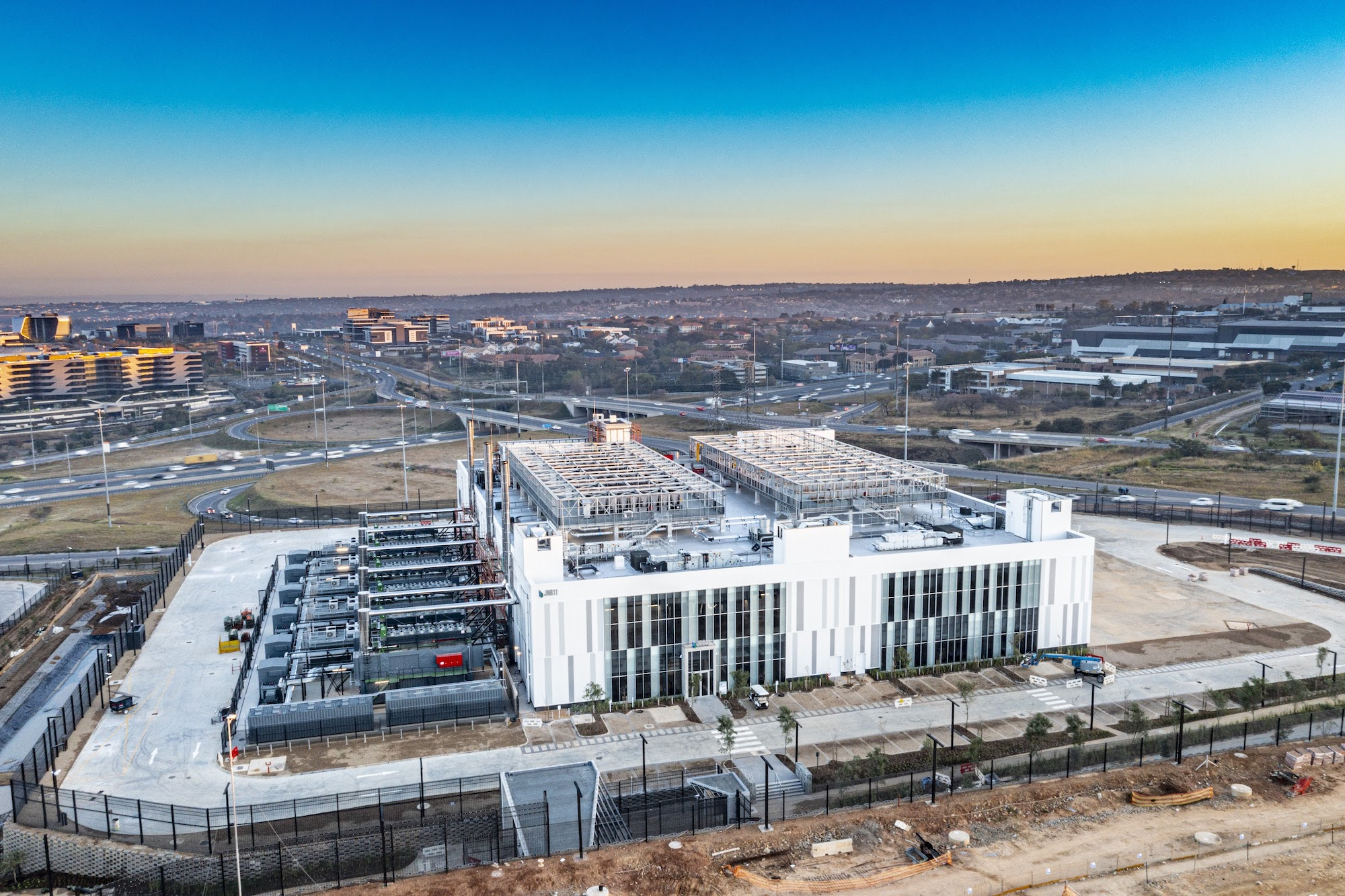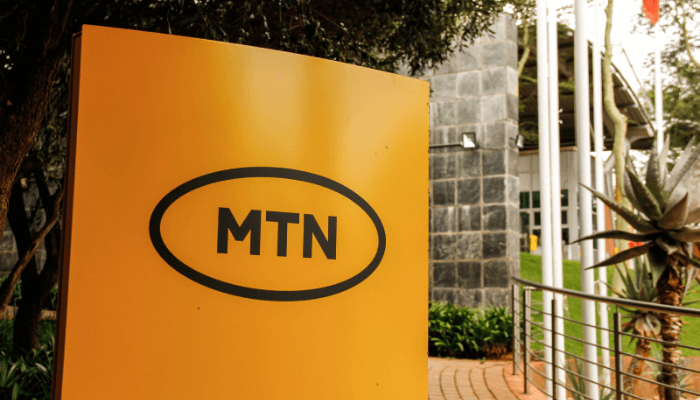In the last couple of years, South Africa has attracted data centre infrastructure investments from big tech companies like Google, Amazon, Microsoft, and Oracle, as well as other data centre infrastructure companies like Teraco, Africa Data Centers, and Convergence partners.
According to Africa Data Centers, South Africa will account for the bulk of the $5 billion investment expected to enter the Africa data centre market by 2026, with the country securing an estimated $3.1 billion in investments by that time.
It is curious that all this investment is pouring into data centre infrastructure in the country despite the very big elephant in the room: South Africa’s faltering national grid, brought about by national power provider Eskom’s seemingly never-ending troubles.
To understand this unique phenomenon, let us first explore the history of South Africa’s data centre industry.
A brief history of South Africa’s data centre industry
Before 2006, most data centres in South Africa were used by the country’s mobile network operators and run by Telkom which had the country’s only data centre operation licence. These facilities were not carrier neutral, meaning that each operator could only use its own facility, unlike nowadays where one facility is used by different operators.
In March 2006, another company, Neotel, acquired a second national operator (SNO) licence, allowing it to compete with Telkom in the budding data centre industry.
Neotel was formed as a result of the 2001 passing of an amendment to the Telecommunications Act, which allowed for the creation of a competitor to Telkom. At the time, Neotel’s shareholders included the likes of Eskom, Transnet and private investors including Tata Communications.
In 2008, taking advantage of the new regulatory environment, another company, Teraco Environments, which provided vendor-neutral data centre infrastructure, was also born.
The formation of Neotel and Teraco saw the decentralisation of the data centre industry in South Africa, moving away from the Telkom monopoly to a more democratised model. In time, other infrastructure providers like Business Connexion, Technology Corporate Management, Digital Parks Africa, and Vantage Data Centers popped up.
The arrival of big tech on the scene
In the late 2000s, big tech companies like Amazon realised that they were under-utilising their servers because most of the time, they were only using 30-40% of their capacity to serve their customers. Amazon then created a product called EC2, which allowed customers to rent their extra computer storage. This signalled the birth of the public cloud in Europe and North America.
However, most of this storage sat in facilities located in North America, Europe and some parts of Asia. It was only in 2014 that these tech giants began building local branches of these storage facilities in Africa. This signalled the birth of the public cloud on the continent.
Market conditions as well as the rise of internet usage and the proliferation of carrier neutral facilities like Teraco and Digital Parks motivated big tech companies to build facilities on the continent. These carrier neutral facilities made it feasible to host local branches of services like Azure and EC2.
According to the International Telecommunication Union, demand for data centres on the continent has doubled since 2016, to more than 250 megaWatts (mW) and at least another 1200 mW will be needed by the end of this decade.
In 2019, Microsoft and Amazon were the first to utilise local data facilities to power their public clouds in South Africa. Today, over 80% of the space in these facilities is used by these public cloud providers, or hyperscalers as they are known.
The public cloud model changed the data centre industry in South Africa. Companies no longer wanted to deal with the stress that came with building and maintaining their own data centres when they had the option of renting from the hyperscalers who either rented out facilities built by local providers or built out their own.
The insatiable appetite for data centre facilities in South Africa
Africa’s rapid digitalisation means that tons of data are being produced, driving up the demand for public cloud facilities and hyper-availability zones. South Africa, Africa’s most industrialised nation, is responsible for producing a significant amount of this data.
Several other factors play to South Africa’s advantage, cementing its status as the continent’s data centre hub. Physical security, geological and climate stability, workforce availability and appropriate infrastructure and services are some of these factors, in which South Africa comfortably outpaces the rest of the continent. South Africa also has skilled and sophisticated engineering, IT and financial sectors, operating in a fairly mature and stable regulatory environment.
South Africa houses 55 of the continent’s Africa’s 121 data centres, according to Cloudscene. However, for context, the country’s entire data centre capacity is roughly the same size as that of Madrid, the capital city of Spain.
Most of the biggest private companies in the country as well as some government departments, have either migrated their data to public clouds, are in the process of doing so or are at the very least in the process of designing cloud migration strategies.
All of this demand is pushing the growth in the public cloud, which in turn necessitates growth in terms of resources and the infrastructure required to house all this data.
According to unconfirmed figures, there is currently about 300 mW in data centre infrastructure being built in South Africa in anticipation of the growing demand from hyperscalers.
Circumventing South Africa’s power issues
Despite the inflow of capital investment into the country’s data centre industry, according to experts, the investments could even be more substantial if it wasn’t for South Africa’s faltering national grid.
“The frequent load-shedding and unreliable energy supply from the utility is hindering the growth of data centres in South Africa. This is significant because South Africa is not only the largest peering hub in the Sub-Saharan Africa, but it also serves as a crucial access point for neighbouring countries to access applications, local caching, and even the internet through the multiple submarine fibre optic systems that land in SA,” said *Karabo Thulo, a data centre professional.
Running a data centre in South Africa has become very expensive, and those costs are being passed on to the hyperscalers who make up the majority of tenancy in the facilities. This means that operating their public cloud in South Africa is more expensive than in Europe or other parts of the world.
To deal with the power situation which threatens to dethrone the country as the data centre capital of Africa, Independent Power Producers (IPPs) are diving in to take advantage of the market conditions. In June 2021, IPPs were given the regulatory leeway to generate up to 100mW without a licence. The previous limit was 1mW.
Data centre infrastructure providers have taken this opportunity to partner up with IPPs to meet their power needs. The Sola Group, based in the northern Cape, signed a deal with Amazon to provide solar power for the tech giant’s Cape Town facility. Africa Data Centres appointed Distributed Power Technologies (DPT) as its solar energy and storage solutions provider for its data centres across South Africa. The examples go on and on.
The unintended benefit of reliance on alternative energy sources means that data centre facilities in South Africa indirectly address an issue faced by the facilities in Europe and North American countries– environmental impact concerns.
In these countries, national grids are able to sustain the demand of the facilities but there is growing concern about the impact of the demand on the environment as more power needs to be added to the national grids.
There is currently no regulatory framework to address the impact of energy consumption by data centres on the national grid in South Africa, so infrastructure providers have had to self regulate and seek out alternative energy sources since they cannot fully rely on the national grid.
This demand means that South Africa’s alternative energy industry is growing rapidly, which is a win-win scenario for everyone involved i.e. the infrastructure providers and the national grid.
The capital and ownership factors
Data centres are capital intensive projects which require, at the very least, millions of dollars in capital injection. So far, most of the major data centre projects in South Africa have been financed by a combination of funding from North American and European private capital as well as international development institutions. Local capital is still low, though players are steadily increasing their bets on the sector.
According to investment banker Tshepo Magagane, local capital comes mostly in the form of financing from banks, instead of investment. This is because, for starters, local investors just do not have the capacity to partake in data centre projects. However, for financiers, the perspective is different.
“Data centres are the easier real estate play compared to commercial and residential. You are looking at corporations, you are looking at a long horizon, the cash flows are predictable, the margins will likely have inflation adjustments (or for other costs), you are dealing with a great, or at least good credit quality, and the business model is well understood. So all in all, it is easier for a credit committee to get their heads around it,” stated Magagane.
The lack of local investment in data centre projects means that ownership and benefit, as with other old technologies, will go overseas. According to Thulo, there are public sector institutions that have the capacity to finance such projects but the issue always comes to them being too risk-averse and not being informed enough to invest in such projects.
“Public institutions hold billions of rands, yet none of them are actively engaging in the sector. By the time the digital infrastructure on the continent flourishes and reaches scale, foreign investors will be the ones reaping the benefits and profits,” added Thulo.
The small percentage of local investors in the industry, according to Thulo, are also quick to exit at the earliest opportunity, foregoing the benefit that will come from their investments in 10 to 15 years, for, understandably so, multiples of 20 to 30 on their initial investments.
“At present, a majority of the data centres being constructed in South Africa are not owned by locals, but rather by foreign investors both known and unknown. By the time these assets have reached maturity and the entire population is using the internet and engaging with cloud-based applications and AI tools, there will be limited local benefit from the infrastructure,” concluded Thulo.
Looking ahead
It is clear that South Africa’s data centre industry has immense potential. Despite pressing power challenges in an energy-intensive industry, the sector has managed to stand its ground and dominate its continental peers, as a result of favourable macroeconomic conditions which makes the country the destination of choice for data centre projects.
As digitization initiatives sweep across the country and create swarths of data, the demand for data centres will continue to skyrocket.
However, the challenge lies in getting local investors to see the sector’s viability. One way to overcome this is managing energy concerns in the country. Addressing energy concerns will make running data centres much cheaper in South Africa, which will mean wider margins for infrastructure providers and the creation of more facilities, which will further accelerate the sector’s growth and the country’s digitization ambitions.
On the issue of ownership, it is important that the benefits of data centres, both socio-economic and financial, stay in the country. An active effort from public sector institutions to invest more in data centre infrastructure projects would be a great start, seeing that they have the financial muscle to partake in the industry.
Public and private sector partnerships in this instance could go a long way in establishing more local ownership of data centre infrastructure, where the former contributes the capital and the latter brings the expertise. Whether South Africa will see this materialise in this lifetime remains to be seen.
*Not his real name





















